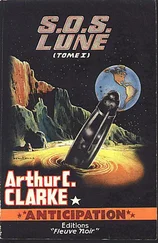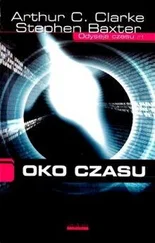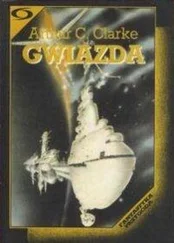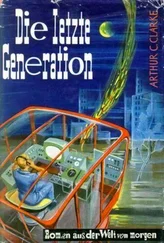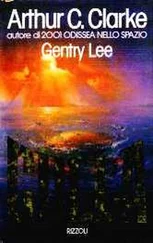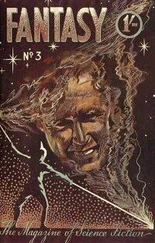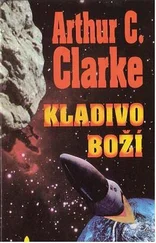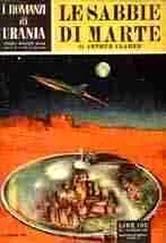Still more problems are caused for the Earth by the sun’s occasional irregularities. Mikhail said, “You have coronal mass ejections—like the monster that hit us on June 9—large-scale outpourings of plasma flung at us from the sun’s surface. And then you have flares. These detonations on the sun’s surface, powered by magnetic flaws, are the largest explosions in the modern-day solar system, each amounting to the blast of billions of nuclear weapons. Flares bombard us with radiation from gammas to radio waves. Sometimes they are followed up by what we call ‘solar proton events’—cascades of charged particles.”
The restless sun follows an eleven-year “solar cycle,” at the peak of which sunspots swarm and flares erupt with much more vigor than at its minimum. Mikhail sketched the accepted mechanism behind the solar cycle. A “meridional flow” of plasma over the sun’s surface from equator to poles carries the relics of sunspots north and south. At the poles the cooling material sinks down into the body of the sun as far as the base of the convective zone, and then migrates back toward the equator. But the magnetic scars left by sunspots linger on through this cycle, ghosts that seed the next generation of active regions.
Mikhail described the complicated relationship of sun, Earth, and humanity.
Even in historical times the sun’s variability has affected the Earth’s climate. For more than seventy years, from around 1640 to 1710, very few sunspots were observed on the sun’s face—and the Earth was plunged into what the climatologists call the “Little Ice Age.” Europe suffered severe winters and cool summers; at the peak of it, in 1690, London children ice-skated on the Thames.
In the electronic age, a growing dependence on high technology made humans much more vulnerable to even mild solar tantrums. In April 1984 a flare knocked out communications on Air Force One; President Reagan, over the mid-Pacific, was left incommunicado for two hours. Before June 9 the most intense storm on record had occurred in September 1859; that one had melted telegraph wires.
“We actually came close to that again in 2003,” Mikhail said. “The sun suffered two eruptions in successive days, aimed right at the Earth. We were saved from more severe effects only by a chance alignment of magnetic fields.”
Rose Delea was getting restless. “All these phenomena are well known.”
Mikhail said, “Yes, we think we are getting a handle on measuring the effects of these different solar glitches—and predicting them, though that’s still more an art than a science …” He put up a slide of three “space weather scales” that the current Space Weather Service had inherited from the old American Space Environment Center, and had elaborated on since. “You can see we describe three types of problem for Earth: geomagnetic storms, solar radiation storms, and radio blackouts. Each type is calibrated with these scales, from one to five—one being minor, and five being severe.”
Siobhan nodded. “And June 9—”
“June 9 was principally an outcome of a coronal mass ejection, and would be measured by our G-scale, our geomagnetic-storm scale.”
“And its rating?”
“Off the scale. June 9 was unprecedented. But the irony is that the event was better predicted than any solar glitch in history, thanks to Doctor Mangles.” He glanced at Eugene.
But Eugene, as distracted as ever, didn’t react to the cue; he seemed barely aware that the rest of the group existed.
There was an awkward silence. Bud called for a break.
***
You had to fetch your own coffee, it turned out; there were no spare hands to fetch and carry. And there were no digestive biscuits, not one on the whole damn Moon.
A line quickly formed at the coffee spigot at the back of the room. But Mikhail, near the front of the queue, picked up two plastic beakers of coffee and tentatively approached Siobhan, who accepted a beaker gratefully. Mikhail’s face was lugubrious and crumpled, and his voice was warm and rich; Siobhan liked him instinctively.
He said, “I imagine you’re the first Astronomer Royal to visit the Moon?”
“You know, I don’t think any of us even left Earth before.”
“Flamsteed would be proud of you.”
“I like to think so.” She sipped her coffee, and couldn’t help but grimace.
He smiled. “I apologize for Clavius coffee. And for the reception you’ve received here. We Moon-folk are an odd lot. A small society.”
“I was expecting a certain insularity.”
“But it’s more than that,” Mikhail said. “We are very self-reliant—we have to be. But that breeds a certain indifference to outsiders, and sometimes resentment. This meeting is all about Eugene, of course. And Eugene is—”
“Special?”
He smiled. “Something like that. His personality is clearly difficult. And his social situation isn’t helped by his choice of discipline. For the last generation of solar physicists, neutrinos were, for a long time, something of an embarrassment.”
“Ah. The ‘neutrino anomaly.’ ” When it had first been studied closely, the flood of neutrinos detected coming from the core of the sun was significantly less than had been predicted by then-current models of particle physics. It had turned out that the physics was wrong—neutrinos, thought to be massless, actually were not—and when that was put right in the theoretical models, the “anomaly” went away.
“You know how it is in science,” Mikhail said gloomily. “Fashions come and they go. My area of work, this messy solar weather with its plasma storms and tangled-up magnetic fields, has never been fashionable. But after the business of the anomaly, solar neutrino studies were definitely not a sexy subject area. And then Eugene annoyed everybody by detecting yet another sort of neutrino anomaly—just when everybody thought it was sorted out for good.”
“Okay. But even though he’s prickly, I get the sense that he’s popular here.”
Mikhail pulled his lip. “I wouldn’t say popular. But it’s well known that it was Eugene’s work that gave us our only early warning of the June 9 event. Nobody believed a word until the event was actually in progress, of course—he came to me at the South Pole so I could raise the alarm—but even so Eugene’s warning saved a lot of lives. That’s made him something of a folk hero, you see, among us exiles from Earth. So when an outsider like yourself shows up, no matter how highly qualified—”
“I understand.” She eyed him and said carefully, “You just wouldn’t think that a brain like Eugene’s could reside behind such a face.”
Mikhail looked at Eugene with undisguised longing. “But I think his face, his body, is his curse. Everybody assumes he must be no more than an ‘airhead jock,’ as my American colleagues say. Nobody takes him seriously. Even I find his looks—”
“Distracting?” She smiled. “Welcome to the club, Mikhail.”
Mikhail said edgily, “But it is what goes on inside that beautiful head that is so disturbing.”
Bud reconvened the session.
When Eugene Mangles spoke, every eye turned his way curiously. His accent was small-town American, Siobhan thought, and he sounded like a teen, younger than his midtwenties; his looks didn’t fit what he had to say.
And his presentation about the anomalies he had discovered at the heart of the sun, while no doubt technically accurate, was anything but lucid.
Siobhan actually knew a lot about neutrinos. There are three known ways to make neutrinos: with fusion processes in the heart of a star like the sun, by turning a nuclear reactor on and off, and in the Big Bang that gave birth to the universe itself, the titanic event whose large-scale consequences were Siobhan’s own subject matter. What makes neutrinos so useful to solar astronomers is that matter is all but transparent to them. And so neutrinos provide a unique way of studying the sun’s inner structure, including the fusing core, a place from which even light struggles to escape.
Читать дальше

